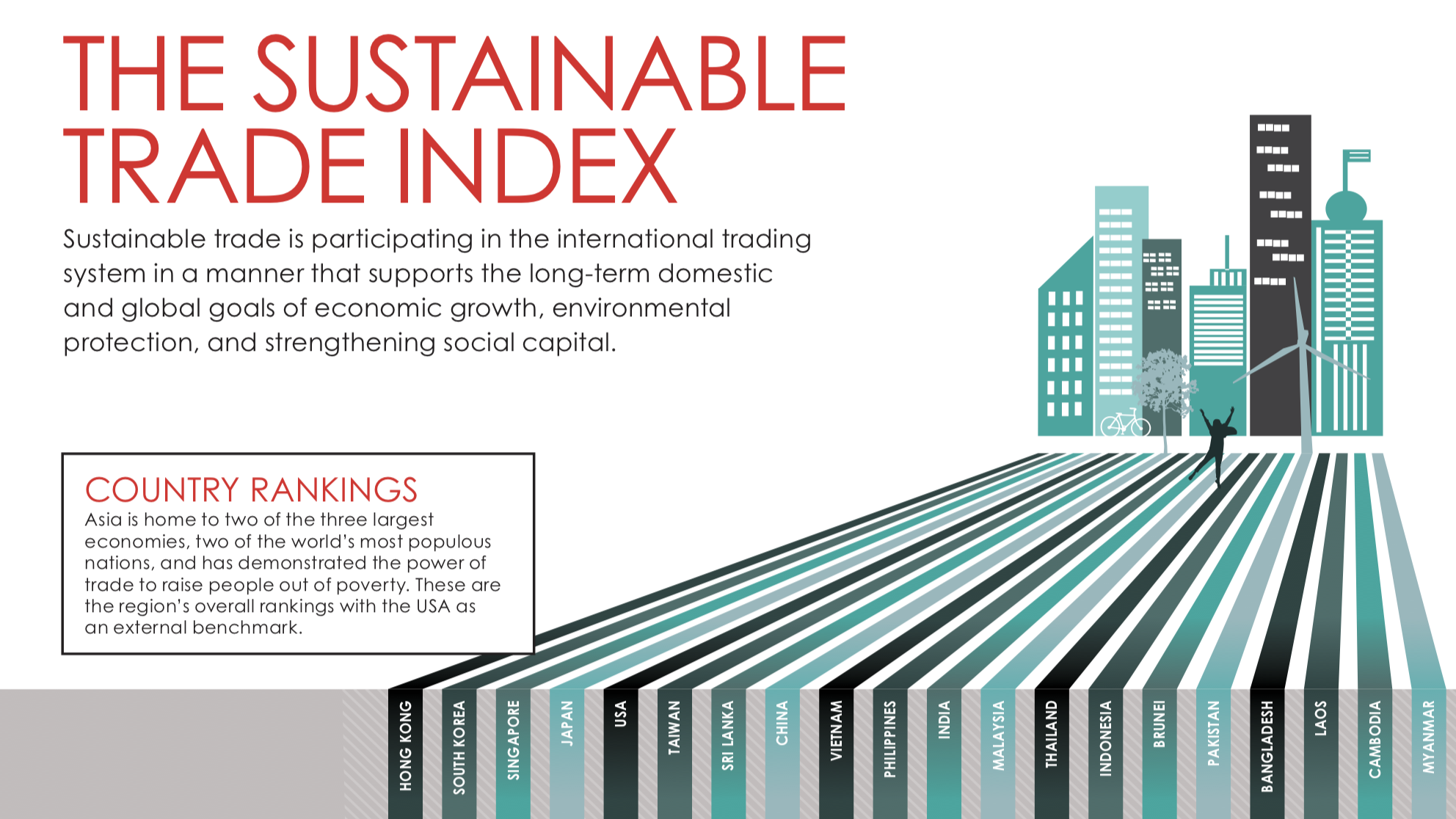Published 08 August 2018
First launched in 2016, the Hinrich Foundation Sustainable Trade Index ranks 19 economies in Asia and the United States' ability to participate in global trade in a way that creates sustainable growth, encourages foreign direct investment, and attracts support from multilateral development agencies.
Benchmarking sustainable trade
First launched in 2016, the Hinrich Foundation Sustainable Trade Index ranks each economy’s ability to participate in global trade in a way that creates sustainable growth, encourages foreign direct investment, and attracts support from multilateral development agencies. Built by the Economist Intelligence Unit, the index measures the readiness of 19 economies in Asia and the United States to trade sustainably.
According to the recently released 2018 Sustainable Trade Index report, trade sustainability is rising in importance for multinational companies when making decisions about foreign direct investments (FDI) and sourcing. MNCs are restructuring their supply chains to improve the sustainability of their operations. Yet, there is an alarming trend of economies in Asia — particularly the richer ones — broadly regressing in their trade sustainability, indicating a disconnect with corporate expectations.
Hong Kong leads the way and Sri Lanka is notable up-and-comer
Asia’s commitment to trade-related growth appears stronger than ever. As such, Asia now finds itself in a unique position to help lead and sustain the global economy’s commitment to global trade, provided that it makes improvements on trade sustainability. Trade sustainability is now more critical than ever to avoid further destabilizing our global trade system and for economies in Asia to continue reaping the benefits from trade. Some key findings from the 2018 Index report:
- Hong Kong edged out Singapore and South Korea to take the top spot on the index.
- Several middle-income countries such as Sri Lanka, China and Vietnam have leapfrogged the richer (in per-head terms) economies on the index.
Explore three pillars of sustainability
The comprehensive Index database is a useful tool that allows users to directly interact with the Sustainable Trade Index data. The database features scores and rankings for each economy in 24 indicators across three pillars of sustainability: economic, social and environmental. Using the database tool, users can directly compare indicators, adjust score weights and visualize data in custom charts and graphs. It’s a powerful tool for regional comparisons or reviewing the performance of a particular economy.
As Merle A. Hinrich, Founder and Chairman of the Hinrich Foundation, points out: “The index serves as a proxy for each country’s progress in meeting the UN’s Sustainable Development Goals. Although trade is an indispensable ingredient in economic development, it cannot be sustainably pursued without responsible environmental stewardship and a commitment to fully developing social capital.”
Learn more about the 2018 Hinrich Foundation Sustainable Trade Index here.
© The Hinrich Foundation. See our website Terms and conditions for our copyright and reprint policy. All statements of fact and the views, conclusions and recommendations expressed in this publication are the sole responsibility of the author(s).


